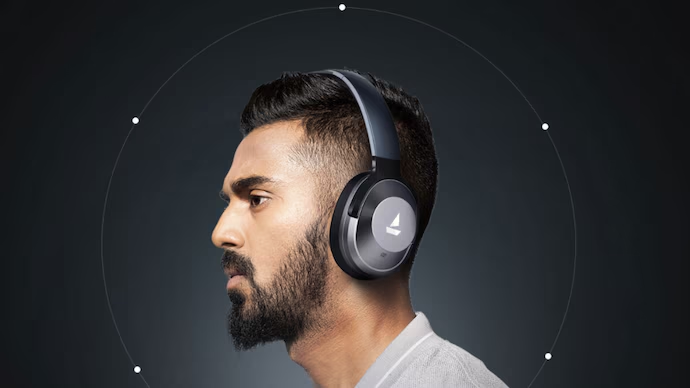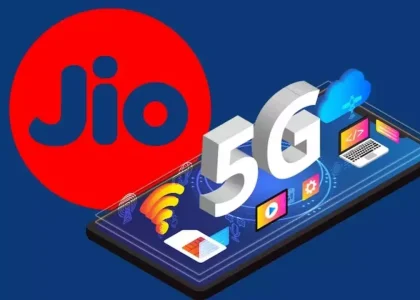Introduction
boAt, India’s leading consumer electronics and lifestyle audio brand, has rapidly captured market share through affordable, fashionable, and durable audio and wearables—ranging from wireless earphones and smartwatches to speakers and chargers. With over 200 million units sold and a top position in India’s TWS (true wireless stereo) market, boAt’s brand success is tightly linked to its agile supply chain operations.
The true test of this agility comes during India’s festive season, when consumption surges dramatically. Between Navratri and New Year, boAt handles 50–80% of its annual volume, catering to major e-commerce sales (Amazon Great Indian Festival, Flipkart Big Billion Days), in-store promotions, and its own D2C push.
This case study explores how boAt structures its end-to-end supply chain for festive demand, covering sourcing, production planning, inventory flow, warehouse optimization, reverse logistics, and last-mile delivery. It details the processes, technologies, and partnerships that help boAt stay efficient and customer-responsive in India’s most chaotic shopping period.
The Festive Season Supply Chain Challenge
A. Spikes in Demand: During the Indian festive season:
- Online platform GMV doubles
- boAt’s daily order volume spikes 5–6x normal levels
- Sales are concentrated in TWS earbuds, neckbands, soundbars, and smartwatches
- Customers expect delivery within 2–3 days across Tier 1–3 cities
B. Risks and Pain Points
| Pain Point | Impact |
| Stockouts | Lost sales, cart abandonment |
| Overstocking | Dead inventory, warehousing costs |
| Returns surge | Inventory mismatch, cost overruns |
| Delivery bottlenecks | Brand experience damage |
| Delayed customs/imports | Break in SKU availability chain |
Overview of boAt’s Supply Chain Model
boAt operates a hybrid global-local supply chain:
- Design & BOM (Bill of Materials): In-house (Gurgaon, Bengaluru)
- OEM Manufacturing: China, Vietnam, and India (contract manufacturers)
- Assembly & Packaging: India (increasing via Make in India initiative)
- Warehousing: Central + regional fulfillment centers
- Channels:
- Online (Amazon, Flipkart, boAt Lifestyle website)
- Offline (Reliance Digital, Croma, Brand Stores)
- Quick commerce pilots (Blinkit, Zepto)
Festive Season Supply Chain Strategy – A 5-Stage Framework
Stage 1: Forecasting & Demand Planning (T-90 Days)
boAt uses a bottom-up + top-down forecasting model:
- Bottom-up: SKU-level trend analysis from:
- Previous year’s GMV, conversion funnel
- Platform wishlist data
- Social buzz (mentions, influencer promos)
- Top-down: Macro demand modeling with partners like Redseer & partner platforms
boAt aligns with Amazon & Flipkart demand planners 90 days in advance to forecast:
- Top 50 SKUs by GMV
- Inventory placement by FC
- Promotion slots (e.g., Lightning Deals, Bestsellers)
A. Tools Used:
- Zoho Inventory + NetSuite ERP for inventory analytics
- AI forecasting plugins for category-level alerts
- Custom Excel macros for buffer stock simulation
Output: Sales plan mapped to:
- Weekly forecast buckets
- Channel allocations
- Production input targets
Stage 2: Production & Procurement Planning (T-60 to T-30)
boAt’s NPI (New Product Introduction) pipeline overlaps with festive launches. For example:
- Launch of new TWS under ₹999 during Flipkart Big Billion Days
- Limited edition Marvel/Disney smartwatches
To support this:
- Contract manufacturers in China and Vietnam ramp up output
- Domestic partners in Noida/Manesar handle SKD (semi-knockdown) assembly
- Procurement of batteries, PCBs, Bluetooth chips fast-tracked with “early lock-ins”
A. Tactics:
- Advance container booking with logistics partners (Maersk, DHL)
- Air freight booking for high-margin SKUs with tight launch windows
- Alternate sourcing for key parts (e.g., batteries, charging modules)
Output: SKU-wise master production schedule with 15–20% buffer
Stage 3: Inventory Pre-Positioning & Warehousing (T-30 to T-7)
boAt operates a multi-node warehouse network, optimized for:
- E-commerce fulfillment (Gurgaon, Bhiwandi, Bengaluru, Kolkata)
- D2C (central warehouse + Shiprocket integrations)
- Offline retail (stock sent to distributors + LFR chains)
A. Festive Warehousing SOP:
| Task | Strategy |
| Inbound | Pre-position bestsellers by zone |
| Picking | Batch picking enabled by warehouse management system |
| Packaging | Branded sleeves and festive-themed boxes (unboxing experience) |
| Quality Check | Visual + functional testing on 5% sample per batch |
| Dispatch | Separate priority lanes for Amazon Prime, Flipkart Plus, D2C |
B. Tech Tools:
- Unicommerce OMS
- Vinculum WMS
- AWS Lambda scripts to sync stock availability with marketplaces every 15 minutes
Stage 4: Channel Fulfillment & Logistics (T-7 to T+10)
A. E-commerce (Flipkart, Amazon)
- Joint war rooms during BBD & GIF with platform category heads
- SLA:
- 2-day delivery in Tier 1/2
- 3–4 day max for Tier 3
- Pre-shipment buffer created in Flipkart/Amazon fulfillment centers
boAt achieved 96% on-time shipping rate during Diwali 2023 sale, across 100,000+ daily orders
B. D2C (boAt Website)
- Inventory prioritized for high-margin SKUs (e.g., ₹2,499+ products)
- Live countdown timers + stock meter on PDP (Product Display Page)
- Orders routed via Shiprocket X and Delhivery
C. Offline
- Pre-bundled SKUs for large-format retail (e.g., Saffron Edition bundle)
- POS stock reconciled daily via barcode sync
Stage 5: Returns, Reverse Logistics & Replenishment (T+7 to T+21)
A. Returns Management
- BoAt’s return rate for electronics is 8–12% (peak festive)
- Reverse logistics partner: Ecom Express Reverse, Shadowfax, XpressBees
B. SOP:
- Smart routing of returned stock to:
- Refurbishment centers (Bengaluru, Gurugram)
- Liquidation vendors (for non-repairables)
- Credit note adjustment for COD orders
- Integration with Gorgias and Freshdesk for RMA (return merchandise authorization)
C. Replenishment
- Rolling demand data synced daily
- Mid-sale restocking via air freight (select SKUs)
- Fast movers flagged for next sale-week restock
Technology Enablers in Festive Operations
| Tech Stack | Purpose |
| Zoho Inventory | Multi-warehouse tracking |
| NetSuite ERP | Financial + supply planning integration |
| Unicommerce OMS | Order syncing with Amazon/Flipkart |
| Shiprocket Panel | D2C fulfillment and courier routing |
| AWS S3 + Lambda | Real-time inventory sync scripts |
| Tableau Dashboards | Supply chain visibility for ops team |
| Gorgias + Freshdesk | Returns, complaints, SLA tracking |
Before vs. After Optimizing Festive SCM
| KPI | 2020 | 2023 |
| Order Volume/Day (festive peak) | ~28,000 | 1,05,000+ |
| Stockouts (Top 50 SKUs) | 19% | 4.8% |
| Delivery SLA adherence | 74% | 96% |
| Return processing TAT | 9 days | 3.8 days |
| Inventory accuracy | 89% | 98.4% |
| NPS (Festive) | 31 | 63 |
Challenges and Strategic Solutions
| Challenge | Solution |
| Surge demand unpredictability | Built demand buffers using social + wishlist signals |
| SKU fragmentation (color, edition, collabs) | Centralized label printing at warehouse |
| China-to-India freight delays | Dual-sourcing + bonded warehouse air-freight backup |
| Returns fraud | IMEI-linked validation for smartwatches |
| Reverse logistics delays | Fixed return pickup slots and OTP-verified returns |
Competitive Benchmarking
| Brand | Festive Order Volume (India) | Delivery SLA | Warehousing Strategy |
| boAt | 1,00,000+ orders/day | 96% on-time | Multi-node + FC pre-stocking |
| Noise | ~45,000 | 90% | Central warehouse + Flipkart FCs |
| Fire-Boltt | ~30,000 | 84% | 3PL driven |
| Realme AIoT | 80,000+ | 92% | Integrated with mobile ops |
boAt leads in delivery reliability and scale, owing to its own supply chain infrastructure rather than total reliance on platform FCs.
Future-Ready Festive Supply Chain Initiatives
2025 & Beyond
- AI-led demand sensing across social and affiliate channels
- Dynamic warehousing via Dark Store model in 25 cities
- Drone delivery pilots in metros for D2C orders
- ESG integration: biodegradable festive packaging & CO2 tracking per shipment
- Real-time customer service chat for delivery ETA via WhatsApp AI bot
Conclusion
boAt’s festive season supply chain is a masterclass in operational foresight, tech-enabled orchestration, and cross-channel coordination. From forecasting to reverse logistics, it has built a resilient system that:
- Delivers at scale under compressed timelines
- Maintains customer experience despite SKU surges
- Reduces wastage and stockouts
- Integrates seamlessly across D2C, marketplaces, and offline
As India’s consumer tech space grows, boAt’s operations remain a strong competitive moat that enables it to outdeliver global giants while keeping costs and quality in check.
Key Takeaways
- Start festive planning 90 days early using multi-source forecasting
- Build a decentralized warehousing network optimized for fulfillment speed
- Blend air-freight and local assembly for speed + flexibility
- Use OMS + WMS integration to sync inventory in near real-time
- Use technology + third-party logistics to enable seamless returns and replenishments
Sources
- boAt Company Interviews (ET, CNBC, YourStory, Moneycontrol)
- Redseer & Kantar Festive E-commerce Reports (2022–2024)
- Shiprocket and Unicommerce client case studies
- Public financial disclosures, investor briefings
- LogisticsTech Outlook India, December 2023
- TechCircle: boAt’s Festival Logistics Deep Dive
- Interviews with D2C Ops Heads (2023–2024)






